
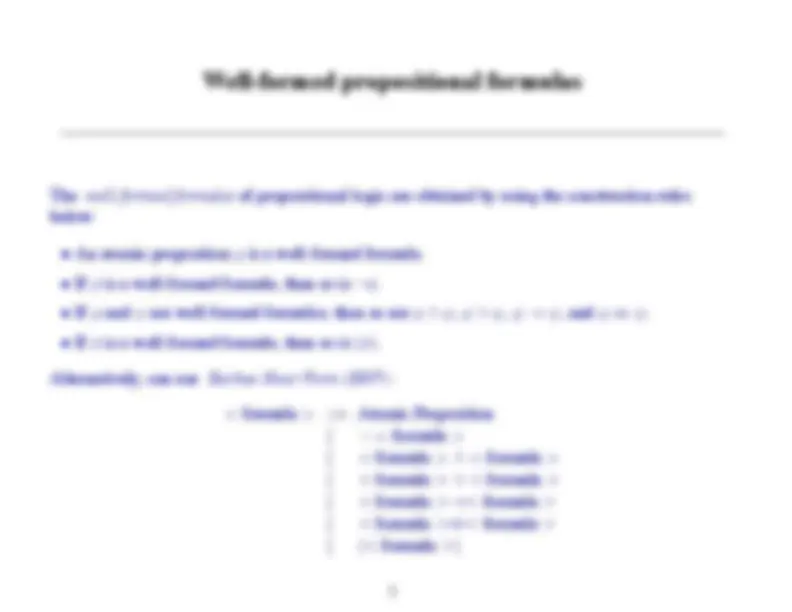
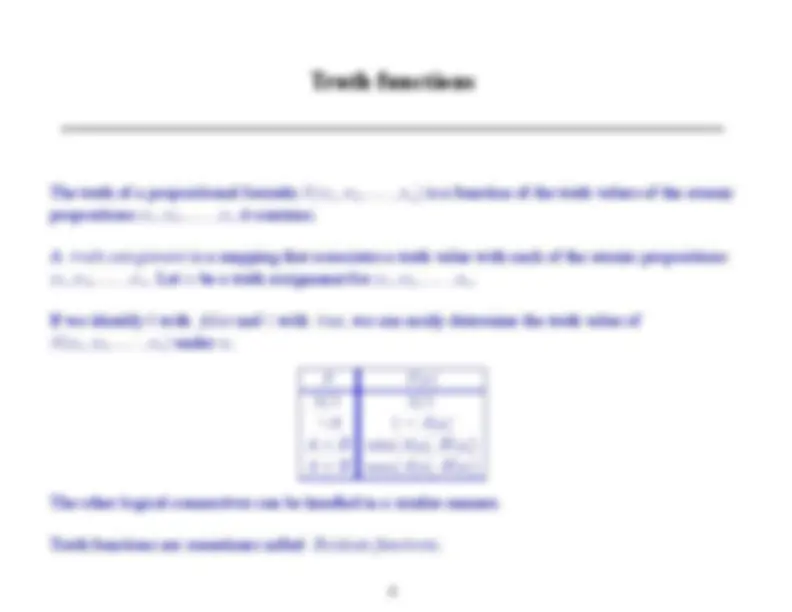
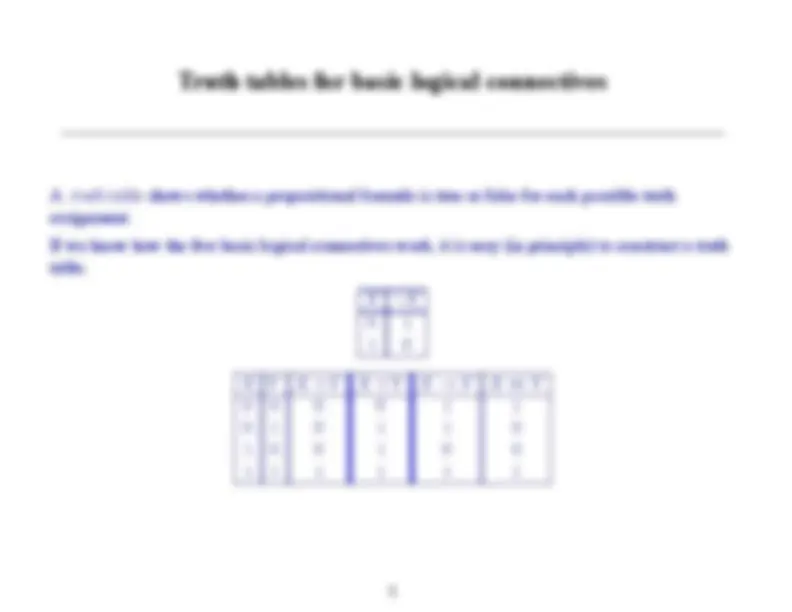
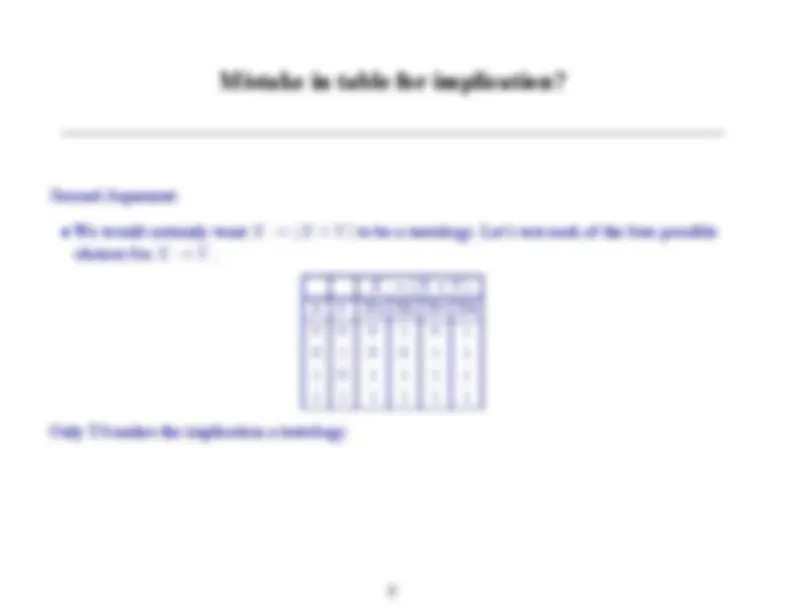
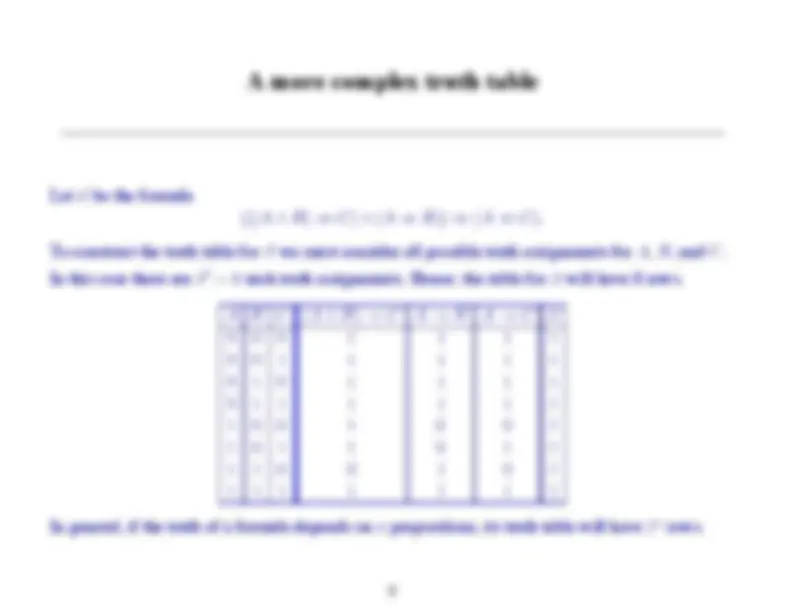
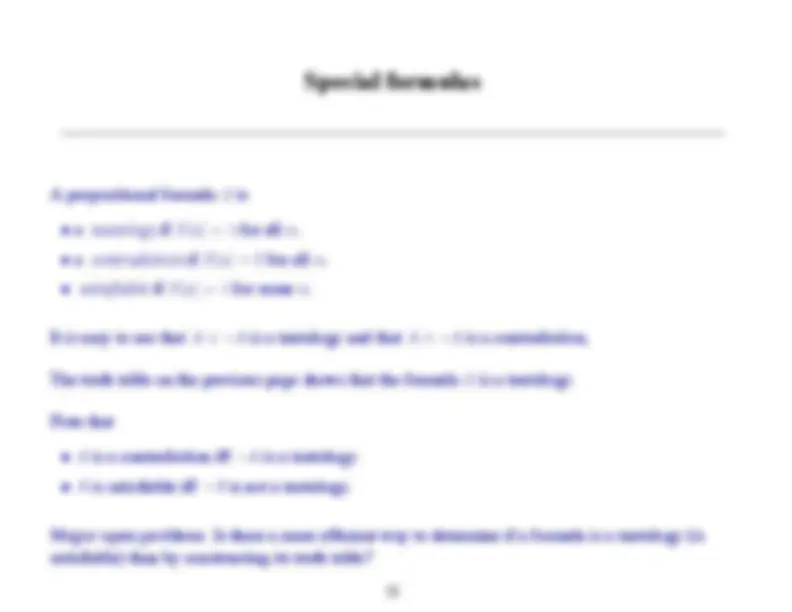
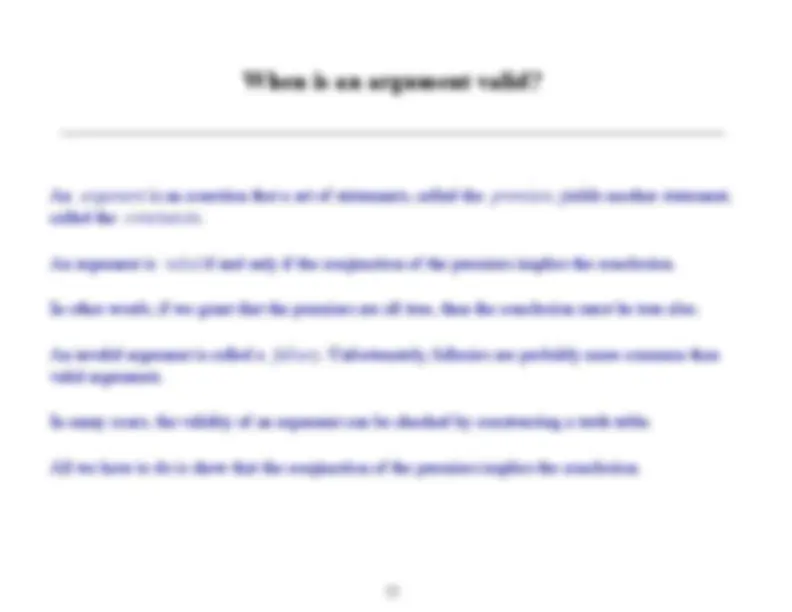

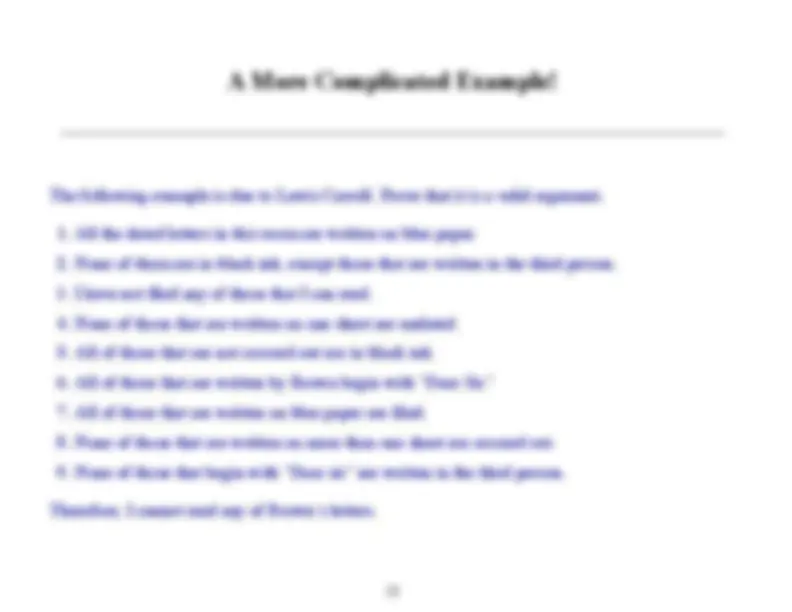
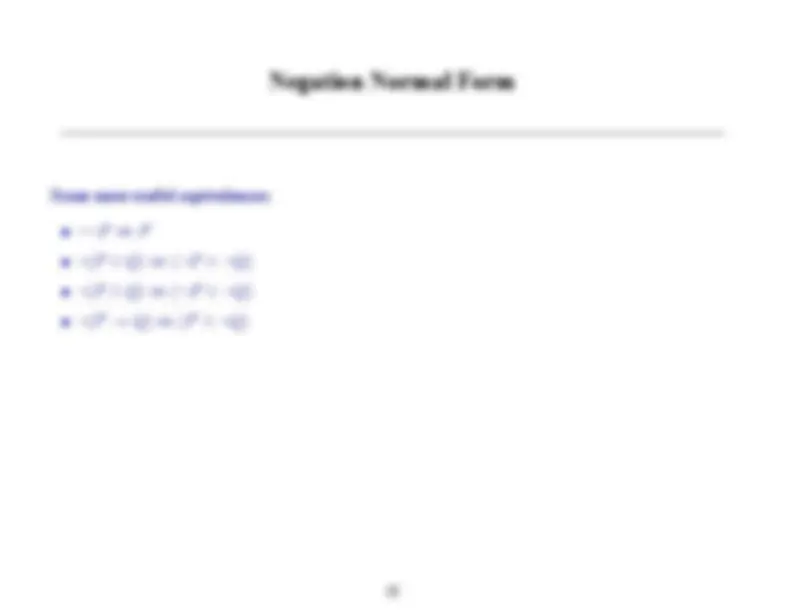
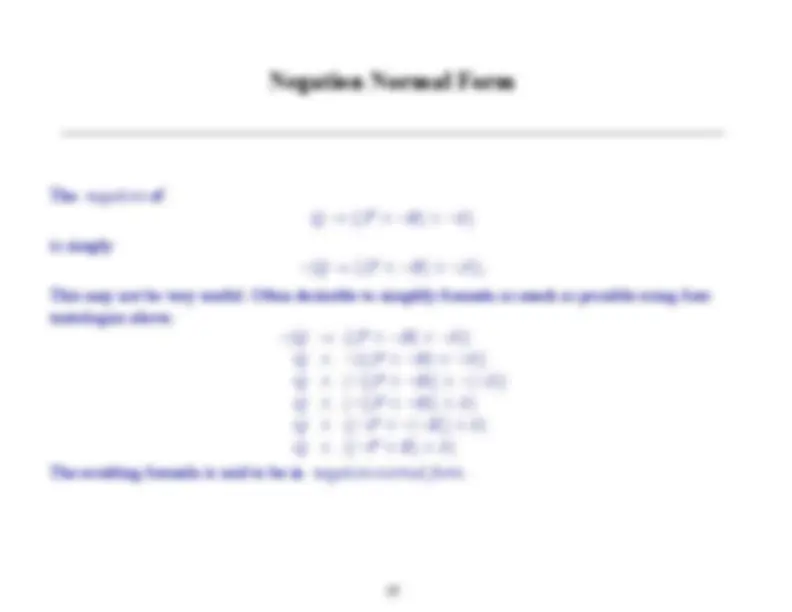
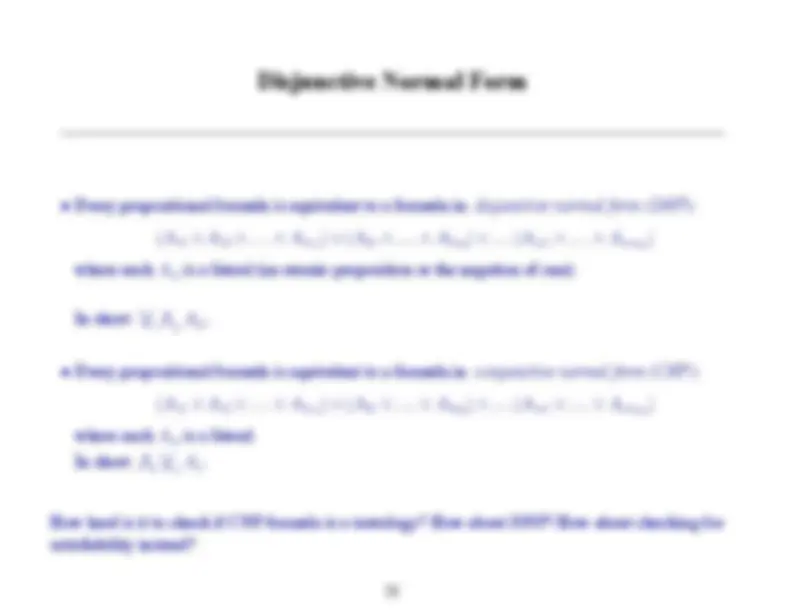
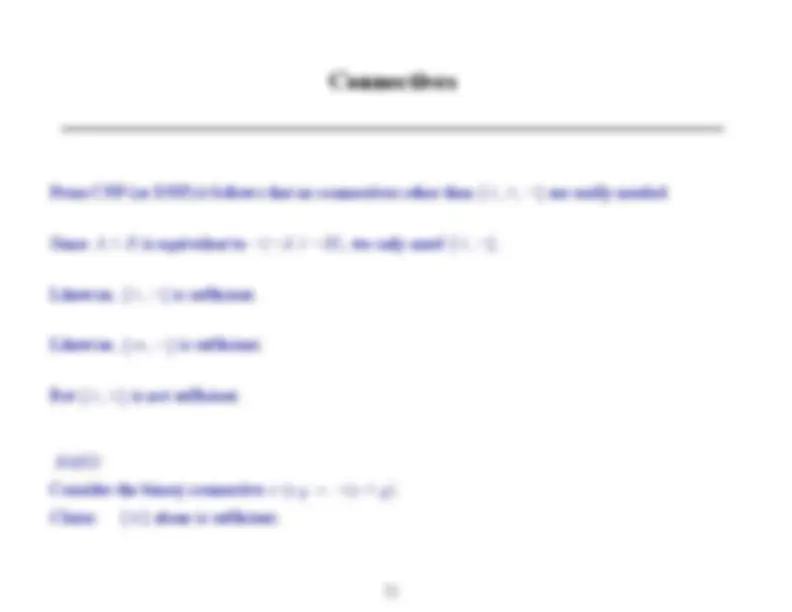
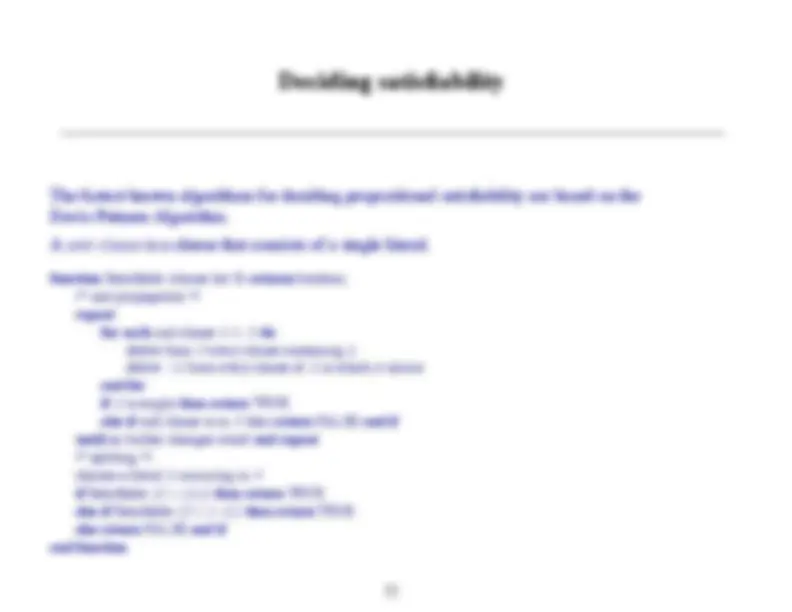


Study with the several resources on Docsity

Earn points by helping other students or get them with a premium plan


Prepare for your exams
Study with the several resources on Docsity

Earn points to download
Earn points by helping other students or get them with a premium plan
Community
Ask the community for help and clear up your study doubts
Discover the best universities in your country according to Docsity users
Free resources
Download our free guides on studying techniques, anxiety management strategies, and thesis advice from Docsity tutors
The basics of propositional logic, including atomic propositions, logical connectives, well-formed formulas, truth functions, and truth tables. It also discusses the difference between valid and invalid arguments and provides examples of common logical fallacies.
Typology: Study Guides, Projects, Research
1 / 22

This page cannot be seen from the preview
Don't miss anything!















Syntax Semantics Truth tables Implications and Equivalences Valid and Invalid arguments Normal forms Davis-Putnam Algorithm
An atomic proposition is a statement or assertion that must be true or false. Examples of atomic propositions are: “5 is a prime” and “program terminates”. Propositional formulas are constructed from atomic propositions by using logical connectives. Connectives false true not and or conditional (implies) biconditional (equivalent) A typical propositional formula is The truth value of a propositional formula can be calculated from the truth values of the atomic propositions it contains.
The truth of a propositional formula is a function of the truth values of the atomic propositions it contains. A truth assignment is a mapping that associates a truth value with each of the atomic propositions
. Let be a truth assignment for. If we identify with false and with true , we can easily determine the truth value of under. The other logical connectives can be handled in a similar manner. Truth functions are sometimes called Boolean functions.
A truth table shows whether a propositional formula is true or false for each possible truth assignment. If we know how the five basic logical connectives work, it is easy (in principle) to construct a truth table.
First Argument: If we used T1, then would have the same table as. If we used T2, then would have the same table as. If we used T3, then would have the same table as –even worse! Clearly, each of these three alternatives is unreasonable. Table T4 is the only remaining possibility.
Second Argument: We would certainly want to be a tautology. Let’s test each of the four possible choices for. T1 T2 T3 T Only T4 makes the implication a tautology.
A propositional formula is a tautology if for all. a contradiction if for all. satisfiable if for some. It is easy to see that is a tautology and that is a contradiction, The truth table on the previous page shows that the formula is a tautology. Note that is a contradiction iff is a tautology. is satisfiable iff is not a tautology. Major open problem: Is there a more efficient way to determine if a formula is a tautology (is satisfiable) than by constructing its truth table?
In the formula is the antecedent, hypothesis or premise is the consequent or conclusion Can be associated with 3 variants: Converse: Inverse: Contrapositive: An implication and its contrapositive are equivalent. Modus Ponens: Given and , conclude. Modus Tollens: Given and , conclude.
An argument is an assertion that a set of statements, called the premises , yields another statement, called the conclusion. An argument is valid if and only if the conjunction of the premises implies the conclusion. In other words, if we grant that the premises are all true, then the conclusion must be true also. An invalid argument is called a fallacy. Unfortunately, fallacies are probably more common than valid arguments. In many cases, the validity of an argument can be checked by constructing a truth table. All we have to do is show that the conjunction of the premises implies the conclusion.
Which of the following arguments are valid?
Let be “the letter is dated,” be “the letter is written on blue paper,” be “the letter is written in black ink,” be “the letter is written in the third person,” be “the letter is filed,” be “I can read the letter,” be “the letter is written on one sheet,” be “the letter is crossed out,” be “the letter is written by Brown,” be “the letter begins with ‘Dear Sir’ “
Now, we can write the argument in propositional logic.
Therefore
The negation of is simply This may not be very useful. Often desirable to simplify formula as much as possible using four tautologies above. The resulting formula is said to be in negation normal form.
Every propositional formula is equivalent to a formula in disjunctive normal form (DNF) : where each is a literal (an atomic proposition or the negation of one). In short:. Every propositional formula is equivalent to a formula in conjunctive normal form (CNF) : where each is a literal. In short:. How hard is it to check if CNF formula is a tautology? How about DNF? How about checking for satisfiability instead?